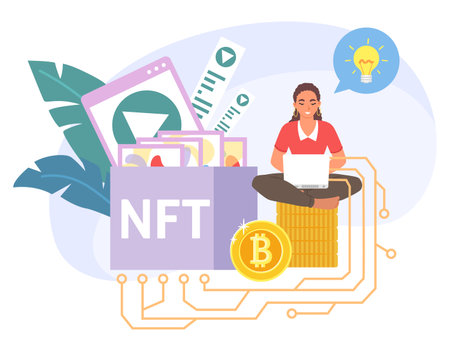1. Introduction: The Evolving Landscape of Crypto Wallets
Cryptocurrency wallets have come a long way since the early days of Bitcoin. Initially, they were simple tools for storing private keys, but today, they serve as gateways to the entire digital asset ecosystem. As blockchain technology advances and mainstream adoption grows, crypto wallets are evolving to meet new security, usability, and functionality demands.
Key Milestones in Crypto Wallet Evolution
| Year | Development |
|---|---|
| 2011 | The first Bitcoin wallets introduced basic storage and transaction functions. |
| 2014 | Hardware wallets emerged, enhancing security by keeping private keys offline. |
| 2017 | The rise of multi-currency wallets allowed users to store multiple cryptocurrencies in one place. |
| 2020 | The integration of DeFi (Decentralized Finance) features enabled direct access to lending and staking services. |
| 2023 | The introduction of smart contract wallets improved automation and user control. |
Main Drivers of Change in Crypto Wallets
(1) Enhanced Security Features
As cyber threats become more sophisticated, crypto wallets must adopt stronger security measures like biometric authentication, multi-signature verification, and advanced encryption techniques.
(2) User-Friendly Interfaces
The complexity of managing cryptocurrencies has been a barrier for many users. Wallet providers are focusing on intuitive designs and seamless integrations to make crypto transactions easier for everyone.
(3) Integration with Web3 and DeFi
The demand for decentralized applications (dApps) is driving wallets to incorporate Web3 connectivity, allowing users to interact with DeFi platforms directly from their wallets.
(4) Regulatory Compliance
With increasing government scrutiny on digital assets, wallet providers are implementing compliance tools such as Know Your Customer (KYC) and Anti-Money Laundering (AML) protocols.
(1) What’s Next for Crypto Wallets?
The future of crypto wallets will be shaped by ongoing technological advancements and regulatory developments. Innovations like AI-powered security, decentralized identity management, and cross-chain interoperability are expected to redefine how users interact with their digital assets.
2. Enhanced Security Measures: Protecting Digital Assets
As cryptocurrency adoption continues to grow, so does the need for advanced security measures to protect digital assets. In 2025, crypto wallets are evolving with cutting-edge technologies designed to prevent unauthorized access and fraudulent activities. From multi-factor authentication to AI-driven fraud detection, lets explore the latest advancements in wallet security.
Multi-Factor Authentication (MFA)
MFA adds an extra layer of security by requiring multiple forms of verification before granting access to a crypto wallet. Instead of relying solely on passwords, users must authenticate their identity through additional methods such as:
- One-time passwords (OTPs) sent via SMS or email
- Authenticator apps like Google Authenticator or Authy
- Hardware security keys such as YubiKey
Biometric Verification
Biometric technology enhances security by using unique physical characteristics for authentication. Many modern crypto wallets now integrate biometric features, including:
- Fingerprint recognition
- Facial recognition
- Iris scanning
This method not only improves security but also simplifies user access without the need to remember complex passwords.
Hardware Wallets: A Secure Storage Solution
Hardware wallets remain one of the most secure ways to store cryptocurrencies. These physical devices store private keys offline, making them immune to online hacking attempts. Popular hardware wallets include:
| Wallet Brand | Main Features | Security Benefits |
|---|---|---|
| Trezor Model T | Touchscreen, open-source firmware, passphrase support | Offline storage, PIN protection, recovery seed backup |
| Ledger Nano X | Bluetooh connectivity, mobile app integration, multi-crypto support | Secure chip technology, offline key storage, encrypted backup |
| Keevo Wallet | No seed phrase needed, multi-signature authentication, carbon key backup | Dual-chip security, biometric authentication, encrypted cloud backup |
AI-Driven Fraud Detection
The integration of artificial intelligence (AI) in crypto wallets is enhancing security by detecting suspicious activities in real time. AI-powered systems analyze transaction patterns and flag potential threats such as:
- Unusual login attempts from different locations
- Large or frequent withdrawals that deviate from normal behavior
- Interactions with known fraudulent addresses or scam-associated wallets
This proactive approach helps prevent unauthorized transactions before they occur.
The Future of Crypto Wallet Security in 2025 and Beyond
The evolution of crypto wallet security is driven by the increasing sophistication of cyber threats. By adopting MFA, biometric verification, hardware wallets, and AI-powered fraud detection, users can significantly reduce risks and safeguard their digital assets. As technology advances further, we can expect even more innovative solutions to emerge in the coming years.

3. The Rise of Smart and Multi-Chain Wallets
How Multi-Chain Wallets Are Changing Crypto Transactions
As the blockchain ecosystem grows, users are no longer confined to a single network. Multi-chain wallets are emerging as a game-changer, allowing seamless transactions across different blockchains without the need for multiple wallets or complex conversions.
(1) What Are Multi-Chain Wallets?
Multi-chain wallets support multiple blockchain networks, enabling users to store, send, and receive assets from various chains in one place. This removes the hassle of managing multiple wallets for different cryptocurrencies.
(2) Benefits of Multi-Chain Compatibility
Having a wallet that supports multiple blockchains provides several advantages:
- Convenience: Users can manage all their digital assets in one interface.
- Lower Transaction Costs: It allows users to choose the most cost-effective network for transactions.
- Easier Cross-Chain Transfers: Reduces the complexity of swapping assets between different blockchains.
- Diversified Investment Options: Supports tokens from different ecosystems without switching wallets.
The Role of Smart Wallets in Enhancing Security and Functionality
Smart wallets are evolving beyond simple storage solutions by integrating automation and enhanced security features. These wallets use smart contracts to facilitate secure and automated transactions while giving users more control over their funds.
(1) Key Features of Smart Wallets
| Feature | Description |
|---|---|
| Automated Transactions | Pre-set conditions allow automatic execution of payments or transfers. |
| Enhanced Security | Multi-signature authentication and biometric verification add extra layers of protection. |
| User-Friendly Recovery Options | Social recovery mechanisms help users regain access if they lose their private keys. |
| DApp Integration | Easily connects with decentralized applications for seamless interaction. |
(2) Why Smart Wallets Are the Future
The combination of automation, security, and ease of use makes smart wallets an essential tool for both beginners and experienced crypto users. As adoption grows, more platforms are integrating smart wallet functionalities to simplify blockchain interactions.
4. User Experience and Accessibility Improvements
How Intuitive Interfaces Are Enhancing Usability
One of the biggest barriers to crypto adoption has been the complexity of using wallets. In 2025, wallet providers are focusing on creating more intuitive interfaces that simplify transactions, reduce errors, and make navigation easier for both beginners and experienced users.
(1) Simplified Onboarding Process
New users often struggle with setting up a crypto wallet due to complex seed phrases and security steps. Modern wallets are now integrating guided onboarding flows, reducing friction while maintaining security.
(2) AI-Powered Assistance
AI-driven chatbots and support tools are being integrated into wallets to help users troubleshoot issues, understand transactions, and even suggest security best practices in real time.
The Role of Decentralized Identity (DID) Solutions
Decentralized identity (DID) solutions are becoming a key component of crypto wallets, allowing users to authenticate securely without relying on traditional usernames and passwords.
| Feature | Benefit |
|---|---|
| Passwordless Login | Eliminates the need for passwords by using biometrics or blockchain-based authentication. |
| User-Controlled Data | Users retain full control over their identity without relying on centralized authorities. |
| Cross-Platform Compatibility | DID can be used across multiple platforms, making logins seamless across different services. |
The Rise of Mobile-First Crypto Wallets
With the majority of internet users accessing services through mobile devices, crypto wallets are evolving with a mobile-first approach.
(1) Biometric Authentication
Fingerprint scanning and facial recognition are being widely adopted to enhance security while making access faster and easier.
(2) One-Tap Transactions
Simplified transaction processes allow users to send and receive crypto with just one tap, reducing unnecessary steps.
(3) Seamless Integration with DeFi & Web3 Apps
Mobile wallets are increasingly integrating with DeFi platforms and Web3 applications, providing a smooth experience for staking, lending, and decentralized exchanges directly from a smartphone.
5. The Role of Regulation and Compliance
As the crypto wallet landscape evolves, regulatory frameworks play a critical role in shaping its future. Governments worldwide are working to implement stricter compliance measures, impacting both individual users and institutions. Understanding these regulations is essential for anyone involved in the crypto space.
Understanding Global Regulatory Changes
Different countries have taken varying approaches to regulating crypto wallets. Some nations embrace digital assets with clear guidelines, while others impose strict restrictions. The following table provides an overview of key regulatory trends:
| Region | Regulatory Approach | Impact on Crypto Wallets |
|---|---|---|
| United States | KYC/AML requirements, SEC oversight | Increased compliance for exchanges and custodial wallets |
| European Union | MiCA (Markets in Crypto-Assets) regulation | Tighter consumer protection and transparency requirements |
| China | Bans on private crypto transactions, promotion of CBDCs | Lack of access to decentralized wallets; focus on digital yuan adoption |
| El Salvador | Legal tender status for Bitcoin | A rise in government-backed digital wallets like Chivo Wallet |
The Importance of KYC and AML Compliance
KYC (Know Your Customer) and AML (Anti-Money Laundering) regulations are becoming standard requirements for crypto wallet providers. These measures help prevent illicit activities but also raise concerns about privacy and decentralization.
(1) How KYC/AML Affects Users
KYC procedures require users to verify their identities before using certain wallets or exchanges. This ensures better security but can also limit access for those who prefer anonymity.
(2) Institutional Adoption and Compliance Standards
Larger financial institutions are entering the crypto space, bringing stricter compliance expectations. Regulated custodial wallets must adhere to banking-level security and reporting standards.
The Rise of Government-Backed Digital Asset Wallets
An emerging trend is the development of government-backed digital asset wallets, often tied to central bank digital currencies (CBDCs). These wallets aim to provide a secure way for citizens to interact with digital currencies but may raise concerns about financial surveillance.
(1) Examples of Government-Backed Crypto Wallets
- DCEP Wallet (China): Supports the digital yuan with state-controlled infrastructure.
- Nigeria eNaira Wallet: Enables transactions using Nigeria’s official CBDC.
- Bahamian Sand Dollar Wallet: Facilitates cashless transactions with the country’s digital currency.
- E.U. Digital Euro Initiative: A proposed framework for a euro-backed CBDC wallet.
(2) Potential Benefits and Challenges
Benefits:
- Simplified transactions with government support.
- Potential reduction in fraud and illicit activity.
- Easier integration into existing financial systems.
Challenges:
- User privacy concerns due to increased monitoring.
- Potential restrictions on non-government-approved cryptocurrencies.
- Lack of decentralization compared to traditional crypto wallets.
The evolving regulatory landscape will continue to shape the future of crypto wallets, making it crucial for users and businesses to stay informed about compliance requirements.
6. The Road Ahead: What to Expect in 2025 and Beyond
The world of crypto wallets is evolving rapidly, with new technologies shaping the way users store and manage their digital assets. As we move into 2025 and beyond, several key innovations are expected to redefine the landscape. From enhanced security measures to deeper integration with decentralized finance (DeFi), let’s explore what the future holds for crypto wallets.
Quantum-Resistant Encryption
As quantum computing advances, traditional cryptographic methods face potential vulnerabilities. To counter this, developers are working on quantum-resistant encryption solutions that can safeguard crypto wallets against future threats. These advancements will ensure long-term security for digital assets.
DeFi Wallet Integration
The rise of decentralized finance (DeFi) has led to a growing demand for wallets that seamlessly integrate with DeFi platforms. In 2025, we can expect wallets to offer built-in DeFi functionalities such as:
- One-click staking and yield farming
- Automated lending and borrowing features
- Decentralized exchange (DEX) integration for seamless token swaps
Self-Sovereign Identity (SSI) Models
Self-sovereign identity (SSI) is an emerging concept that allows individuals to have full control over their personal data without relying on centralized authorities. Future crypto wallets will likely incorporate SSI models, enabling users to:
- Securely manage their digital identities
- Authenticate transactions without sharing private information
- Access financial services in a privacy-focused manner
The Evolution of Multi-Chain Support
The blockchain ecosystem is becoming increasingly fragmented, with multiple chains offering unique advantages. Crypto wallets will continue to evolve by providing robust multi-chain support, allowing users to interact with various blockchains from a single interface.
(1) Cross-Chain Compatibility
Future wallets will facilitate cross-chain transactions, enabling users to transfer assets seamlessly between different networks without intermediaries.
(2) Unified Asset Management
A single wallet interface will allow users to view and manage assets across multiple blockchains, reducing complexity and improving user experience.
A Glimpse Into the Future: Key Features Comparison
| Feature | Todays Crypto Wallets | Expected in 2025+ |
|---|---|---|
| Security Measures | Password & Seed Phrases | Quantum-Resistant Encryption |
| User Control Over Identity | KYC & Centralized Verification | Self-Sovereign Identity (SSI) |
| Ecosystem Integration | Largely Single-Chain Support | Natively Multi-Chain & Cross-Chain Compatible |
| DeFi Access | DApps Require Manual Connection | Builtin DeFi Functionalities |
| User Experience | Siloed Platforms & Interfaces | Simplified Unified Management Tools |
The future of crypto wallets looks promising, with cutting-edge technologies enhancing security, accessibility, and usability. As these innovations continue to develop, users can look forward to more seamless and secure ways to interact with digital assets in the coming years.


